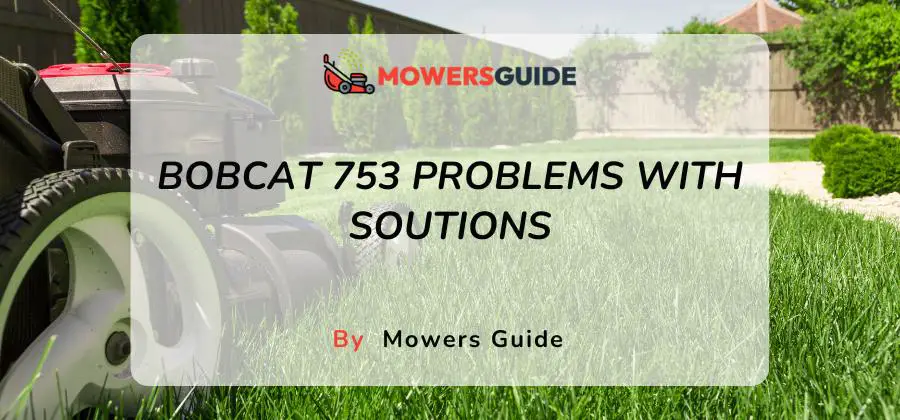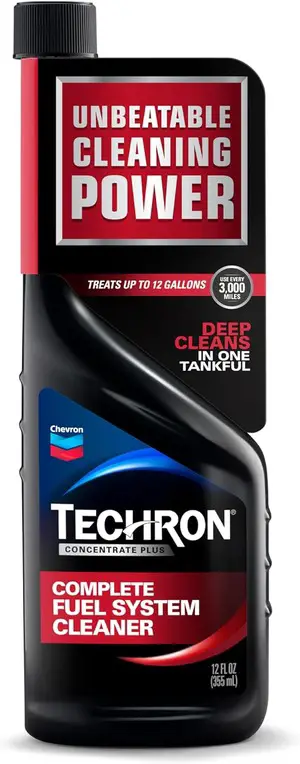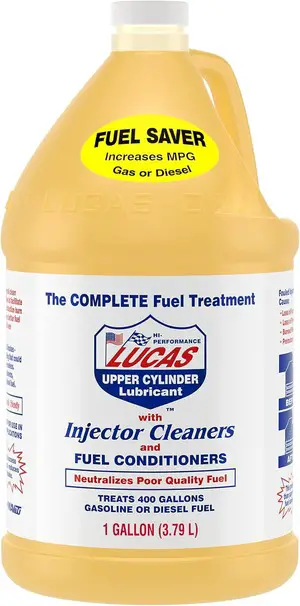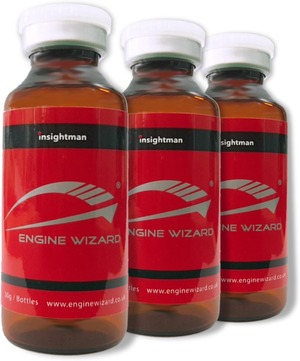7 Common Bobcat 753 Problems (Solutions Included)

The Bobcat 753, with its powerful engine, is a productive machine. On the building site, farm, or equipment rental yard, the 753 Bobcat skid steer loader is offered in a variety of configurations to satisfy your unique needs. Professionals use the Bobcat 753 for everything from snowmaking to clearing land, and its strength and agility are its only real advantages.
Any project works well with the Bobcat 753 skid steer loader. Its cabin design is well-known, and it performs well in all job site applications. It also offers an optional heated and air-conditioned cockpit. If you require a small, versatile skid steer to operate in difficult situations and confined spaces, take a look at this particular model.
However, this Bobcat 753 skid may exhibit certain problems, such as difficulties starting, issues with the hydraulic pump, etc. It is also visible that drive control issues resulting from connector failures exist. You could also experience steering issues.
But you will learn all about Bobcat 753 problems in this article and be able to solve them with ease.
Overview of the Bobcat 753 Skid Steer Loader
A classic compact skid-steer loader in the heavy machinery market, the Bobcat 753 is well-known for its strength and versatility. Due to its small size, exceptional lifting capabilities, and agility, it is a highly valuable tool for many different kinds of businesses.
What features I personally like about the Bobcat 753
- Small Design: Its small dimensions make it simple to maneuver through confined spaces and enable effective operation in environments with limited space.
- Robust Engine: The Bobcat 753, with its powerful engine, is a dependable choice for jobs that call for both excellent maneuverability and heavy lifting.
- Versatility: It can perform a variety of tasks, including digging, lifting, grading, and more, thanks to its vast array of attachment compatibilities.
- Maneuvrability: The skid-steer system provides excellent maneuverability, enabling operators to make accurate movements quickly.
Applications and Usage
The Bobcat 753 is built to perform a variety of jobs. It can be used for digging, lifting, and pushing materials. It can also be fitted with various attachments, such as buckets, forks, and augers.
Because of its agility and small size, it is perfect for jobs that need to be done on uneven terrain or in small spaces. The 753 is a dependable workhorse that can be used for clearing debris and hauling big loads.
Bobcat 753 Problems with Solutions
1) Issue with Hydrostatic Pumps
The following are indicators of pump problems: excessive noise, heat, erratic cylinder operation, decreased speed or absence, decreased hydraulic motor speed, and system failure.
Strange Sounds
Generally, sounds like pounding and knocking indicate the presence of air in the system or cavitation due to low pressure.
If these problems are not settled right away, there may be dire consequences.
Visible Leaks
Although there are frequent hydraulic leaks in the system, there are no outward signs that something is wrong with the equipment’s appearance. If you spot leaks, definitely top up the hydraulic oil ASAP.
You might notice decreased performance, a drop in pressure, or oil smearing the pump’s casing if there are leaks near its surface.
Failure of Seals
Your pump may be operating with a twisted or misplaced rod if your seals are leaking and failing frequently.
Solution
Finding the area of the system where the air is entering and making the required repairs is the only way to stop these noises.
Before it causes issues for the entire system, the leakage issue could be resolved by tightening a valve or replacing a seal. Depending on how much damage the seal has sustained, a skilled mechanic might be able to fix your current equipment.
Replacements:
You’ll be able to take full advantage of it and cut costs if that’s the case.
2) Starting Issue
There are a few possible causes of starting issues with Bobcat 753. The fuel system cannot enter the engine’s ignition chamber during the ignition phase, which will prevent your Bobcat from starting. The fuel injectors can be clogged up, so try replacing those or use a fuel additive that I’ve linked below.
Perhaps you could tap the outside of the carburetor once in a while to help the oil move along. The problem of oil not being pumped correctly might be because of a faulty oil pressure sensor or the actual engine oil pump itself.
If it still doesn’t work, you should change the gasoline filter.
Given that it requires electricity to start, a dead or malfunctioning battery may be the cause of the starting issue. Always make sure that the problem is not from the starter itself.
Additionally, a malfunctioning spark plug may prevent your skid steer from starting. An issue can arise if the plug is damaged because it could supply electricity.
Check the air filter as well, as it can clog and restrict airflow, making it difficult for the Bobcat to start.
Solution
First things first, shake the skid steer and move it to one side to move the oil if you notice that fuel is not entering the carburetor. You should consult a specialist if it doesn’t help.
It is preferable to replace the battery if there is a problem. An outdated battery will result in numerous electrical issues.
If you notice that it is no longer functioning, the spark plug needs to be changed. Attempting to fix it might not be a wise choice.
To ensure trouble-free use of your skid steer, always strive to maintain a clean air filter.
Replacements:
- Ignition Key Switch
- Alternator Belt for Bobcat 753
- Starter Replacement for Bobcat 753
- Fuel Injectors
- Oil Pressure Sensor
- Engine Oil Pump
3) Drive Control Issues
On occasion, operators of the Bobcat 753 skid steer discover that the loader’s drive controls are not obeying their directed commands.
Occasionally, these problems may be directly related to steering or loader connections that have come loose or disconnected; in this case, you may need to tighten or rejoin them to restore proper operation.
Solution
Make sure all of the cables connected to the control panel are connected correctly by looking into them. Cables connect the actuators and the hydraulic fluid pump.
If none of the other options you have for solving the issue prove effective, it may become imperative that the entire circuit board on the control panel be replaced.
4) A Steering Issue
Many different things can cause steering problems. A worn-out steering gear or shaft could be the cause of the problem.
Furthermore, the mower’s drag connection might have come loose, which might have added to the steering wheel’s bounce and vibrations. Luckily for us, the user can easily repair the steering without requiring much effort.
Solution
- Turn off the engine and position the lawnmower on level ground as the first step towards preparing it for repair.
- In the secong step, the steering gear is inspected by removing the steering support bolts.
- Replacing any damaged bearings is necessary.
- Replace the steering system’s bearings, axles, and washers if any of them are damaged in any way.
- Examine the drag connection in step six, which is connected to the gear sector and the tie rod.
Replacements:
- Left and Right Hand Lever
- Bobcat Axle Bearing and Seal Kit
- Throttle Repair Washer Kit for Bobcat 753
- Steering Bar Joy Stick for Bobcat 753
- Axle Bearing and Seal Kit
After the problems are fixed, it’s time to assess the lawnmower’s performance.
5) Transmission Issue
There are several possible problems with the Bobcat 753, including:
- Erratic or powerless movement can result from slipping gears in the transmission.
- Problems with gear shifting: inability to smoothly engage or shift gears.
Solution
To resolve concerns with transmission:
- Fluid Level Checking: Make sure that the transmission fluid levels are within the recommended range by regularly inspecting them. Transistor issues may arise from low fluid levels.
- Testing the Components of the Transmission: Look closely for evidence of wear, damage, or misalignment on all transmission parts, including the clutch, gears, and linkage. To stop more harm from being done to the transmission system, any problems should be fixed right away.
6) Solenoid Issue
Customers may also experience a small fire developing in the solenoid if your valve is prone to frequent blockages. Additionally, the methods listed below can help you fix the instrumental panel if it stops functioning.
There are a few solenoids you need to keep in mind to check:
Solution
Place one solenoid plug into the main harness and the other into the timer harness after unplugging the solenoid. This might take care of the timer problem.
Additionally, a zip tie should be used to secure or fasten the timer bolt. If you want to avoid these problems, you can also replace the solenoid.
7) Malfunctioning Attachments and Work Tool Problems
Types of Attachments Compatible with the Bobcat 753
You can make your Bobcat 753 a multipurpose workhorse with attachments. The options are endless, ranging from buckets to augers. That being said, not every attachment is made equal, so it’s critical to know which ones work with your machine.
Many attachments, such as trenchers, buckets, forks, and more, are compatible with the Bobcat 753. There is an attachment available that can greatly simplify your tasks, whether they involve lifting, digging, or grading. Just be sure to confirm compatibility by consulting the manufacturer’s instructions.
Attachment Malfunctions and Troubleshooting
Perhaps they won’t work properly or according to plan. However, let’s discuss some troubleshooting advice before you start beating your head against the computer. The attachment itself should first be inspected for any obvious wear or damage.
Every component can go haywire at times due to a loose bolt or a worn-out component. Should you replace worn parts or tighten loose ends, you could be able to resume your activities.
Look over the hydraulic connections if that doesn’t fix the issue. A leak or a blockage can cause issues. It’s like having a clogged nose—nothing works properly until you clear the path.
On a Bobcat 753 skid steer, several components and attachments require regular maintenance or replacement due to wear and tear to ensure smooth operation. Here’s a breakdown of the parts you mentioned and others that should be monitored:
1. Fuel Tank Hose and Clamp
- Function: The fuel tank pickup screen filters fuel before it enters the fuel lines, protecting the fuel system from debris or contaminants that could clog injectors or damage the engine.
- When to Change: Over time, the screen can become clogged, affecting fuel flow and engine performance. It should be checked periodically and replaced when fuel delivery issues are noticed (e.g., engine sputtering, loss of power).
- Signs of Wear: Clogged or restricted fuel flow, slow startup, or reduced engine performance.
- Maintenance Tip: Check for cracks or leaks in the hoses and replace them when showing signs of wear.
2. Fuel Primer Pump
- Function: The primer pump is used to manually pump fuel into the engine to assist with starting, particularly after fuel system maintenance or when the engine has run out of fuel.
- When to Change: If the primer pump no longer builds pressure or if fuel is not reaching the engine, it may need to be replaced.
- Signs of Wear: Difficulty starting the machine, especially after fuel system servicing, or a lack of pressure build-up when using the pump.
- Maintenance Tip: Inspect the primer pump during routine fuel system checks and replace it when it shows signs of cracking or poor performance.
3. Pin and Bushings
- Function: Pins and bushings are part of the machine’s articulating joints (such as the loader arms) and allow movement while bearing loads.
- When to Change: Over time, due to heavy loads and repetitive motion, pins and bushings wear out, leading to excessive play in the joints, reducing machine precision and control.
- Signs of Wear: Increased play or movement in the loader arms, noisy or squeaky joints, or visible wear on the pin or bushing.
- Maintenance Tip: Regularly lubricate pins and bushings, but replace them when noticeable play or wear is observed.
4. Pressure Oil Engine Switch
- Function: This switch monitors engine oil pressure and alerts the operator to low oil pressure, which can prevent engine damage due to oil starvation.
- When to Change: If the switch malfunctions or the machine’s oil pressure warning light stays on despite normal oil pressure levels, the switch may need to be replaced.
- Signs of Wear: False low oil pressure readings or engine performance issues tied to low oil pressure alerts.
- Maintenance Tip: Replace if inaccurate readings persist after checking oil levels and pressure.
Additional Components to Monitor for Wear and Tear:
- Radiator Cooling Hose: Regularly inspect for leaks, cracks, or signs of wear.
- Filters (Air, Oil, and Hydraulic): Regularly change to ensure optimal performance and prevent contaminants from entering sensitive parts.
- Drive Belt: Check for cracking, fraying, or wear. A worn belt can slip or break, affecting power to auxiliary systems.
- Tracks: Monitor tread wear or damage and replace as needed for better traction and stability.
- Bucket Teeth and Cutting Edges: These wear down over time from contact with tough materials, reducing digging efficiency. Replace when worn down.
- Battery: Ensure it’s in good condition, with proper voltage and no signs of corrosion at terminals.
Proper Maintenance and Care for Attachments
- Daily: Check fluids (oil, hydraulic), visually inspect hoses and fittings, and clean or check the air filter.
- Every 250 Hours: Replace oil and hydraulic filters, inspect pins and bushings, and check the fuel system.
- Every 500 Hours: Replace engine oil, check hydraulic fluid, replace any worn hoses, and inspect or replace the pressure oil switch.
The right upkeep and care are essential to keeping your attachments in excellent condition. They require care to last, just like your best pair of shoes.
Check the attachments regularly for indications of wear and tear. To prevent more problems, take quick action if you find any damage. It’s like mending a tiny hole in your favorite jeans before it turns into a major fashion faux pas.
After every use, clean the attachments to get rid of any debris or material accumulation.
Let me tell you a story relating to this.
“One time I went to a yard will old loaders and I liked one to the point that I was about to buy it… it wasn’t a Bobcat but anyway… When I started it, there was a really weird sound from the exhaust. I went down to inspect it and what I saw was accumulation in the exhaust, as if they were using cement instead of fuel. I just think they never cleaned the exhaust.
Point is, if you dont clean your exhaust system your muffler can get to a really bad state. Long story short, clean it. If you dont clean it, buy a new one. Here’s an exhaust pipe for a Bobcat 753.“
– Sam Masser, blogger here
Preventive Maintenance Tips for the Bobcat 753
Importance of Regular Maintenance
Routine maintenance for your Bobcat 753 will keep it operating efficiently and avert expensive malfunctions. You’re asking for trouble if you ignore maintenance. I promise that the Bobcat 753, when neglected like a houseplant, will not like it. Thus, do yourself a favor and adhere to a schedule for routine maintenance.
I think it’s best for each of us to have a manual when servicing a piece of machinery. Here’s a link to a Bobcat 753 Workshop Repair Manual in case you want to have a go at replacing some parts yourself.
Avoid Overheating
Coolant and Thermostat
Don’t forget to check the temperature in the system. Keep an eye out for any irregularities. If you spot any concerns for overheating, first check the coolant level, then check if the thermostat needs changing.
Oftentimes, the problem is from the thermostat, because it can’t gauge the temperature correctly so the system can’t maintain it with whatever it has for the purpose. So yeah… cooolan and thermostat. Quick cheap fixes before it gets down to anything serious causing an overheating in the Bobcat 753.
Hydraulic Oil Cooler
How the Hydraulic Oil Cooler Grill Works:
- Heat Dissipation: The hydraulic system in the Bobcat 753 generates heat as it operates. The oil cooler grill allows airflow to pass through and cool down the hydraulic oil, ensuring that it stays within safe operating temperatures.
- Position: The cooler is typically located at the rear of the machine, in front of the cooling fan and radiator. The grill helps protect the cooler from debris while still allowing airflow.
- Cooling Fan: A fan draws cool air through the grill and over the cooler’s fins, transferring heat from the hydraulic oil to the air.
Signs the Oil Cooler Grill Needs Changing or Cleaning:
- Overheating Issues: If the Bobcat starts to overheat or the hydraulic fluid temperature gauge shows a high reading, it could indicate that the oil cooler grill is clogged with debris or isn’t allowing proper airflow.
- Physical Inspection: Check the grill for signs of blockages (e.g., dirt, mud, leaves) or physical damage (like bent fins or cracks). If debris is preventing airflow or the grill is damaged, it needs cleaning or replacement.
- Restricted Hydraulic Performance: If the machine feels sluggish or less responsive, this might indicate hydraulic overheating, often related to a blocked or inefficient oil cooler.
- Fan Running Constantly: If the cooling fan is running more than usual, this might indicate the system is struggling to keep temperatures down, likely due to a dirty or damaged cooler grill.
Maintenance:
- Cleaning: Regularly cleaning the oil cooler grill is essential. Use compressed air or a low-pressure water hose to remove debris. Be careful not to bend the fins while cleaning.
- Replacement: If the grill is damaged or severely clogged beyond cleaning, it should be replaced to ensure proper cooling.
Recommended Maintenance Schedule
Now, you might be wondering, “How often should I perform maintenance?” Great question, my friend. Here’s a recommended maintenance schedule to keep your Bobcat 753 happy:
- Check fluid levels and top up if necessary. Weekly
- Inspect and clean air filters monthly and replace EVERY YEAR!
- Grease all fittings every 50 hours of operation.
- Change engine oil and filters every 250 hours of operation.
- Inspect hydraulic hoses and connections every 500 hours of operation.
You must replace the alternator belt once every couple years to make sure it doesn’t rip and damage the alternator or disturb the electricity supply to other components.
Remember, this schedule may vary based on your specific operating conditions, so always consult the manufacturer’s recommendations.
General Maintenance Guidelines for Extended Lifespan
To maximize the lifespan of your Bobcat 753 loader, follow these general maintenance guidelines:
Keep it clean: Give your Bobcat a good wash regularly. It’ll thank you for staying shiny and rust-free.
Store it properly: When not in use, store your Bobcat in a dry and secure location. It’s like a cozy home for your machine, away from the elements and potential thieves.
Use high-quality replacement parts. Don’t skimp on cheap knock-offs. Invest in quality replacement parts that meet the manufacturer’s specifications. Your Bobcat will thank you.
Remember, maintenance is like investing in your machine’s future. It’s a small price to pay for smooth operation and an extended lifespan.
Still Keeping the Bobcat 753 Alive
The skid steer, also known as the Bobcat 753, can handle a wide range of your requirements and tasks. Due to its power capabilities, the device can perform a great deal of heavy lifting, making it incredibly versatile.
The fact that the majority of users have had their Bobcat 753, for the most part, for a considerable amount of time, further adds to its longevity. The users have enjoyed themselves while working with it. But occasionally, even a well-made skid can exhibit some bothersome problems, and the 753 is no different. The upside is that you now know how to tackle typical Bobcat 753 issues.
The Bobcat 753 is a suggested machine if you’re looking to purchase one for large farms or construction.
Keep Your Mower Healthy
|
Chevron Techron Concentrate Plus Fuel System Cleaner 
Shop Now
|

Shop Now
|
Engine Oil Additive, Engine Treatment, Wear & Tear Protection for Gasoline & Diesel 
Shop Now
|
FAQs
How much power can a Bobcat 753 run at?
Along with features like removable axle hubs for quick and easy servicing, heavy-duty drive chains that never need to be adjusted, and a dual-path cooling system that uses debris-free air to cool, it boasts a 6-foot turning radius and a rated operating capacity of 1300 pounds.
When was the Bobcat 753 manufactured?
Bobcat 753 G Technical Data and Specifications (1999–2003) year.
What distinguishes the Bobcat 753 from the Bobcat 763?
In 1994, Bobcat replaced the 753 with the 763. More lift height, travel speed, and operating capacity were features of the new Bobcat 763, which was a member of the Bobcat C Series.
What series does the Bobcat 753 belong to?
A wise choice for introducing yourself to the well-liked G-Series Bobcat skid-steer loader lineup is the 753. You get excellent value for your money with this machine.
How much fuel can the fuel tank of a Bobcat 753 hold?
The fuel tank of a Bobcat 753 can hold 12.5 gallons.
What fuel does the Bobcat 753 use?
The Bobcat 753 uses diesel fuel.
What engine oil does the Bobcat 753 use?
The Bobcat 753 requires 5.5 quarts of 10W-30 engine oil.
Related Post:
- 6 Bobcat S590 Problems – Troubleshooting and Solutions
- 7 Common Bobcat S250 Problems (Complete Solutions)
- 8 Common Bobcat S185 Problems (Complete Solutions)
- 8 Common Bobcat CT1025 Problems (Complete Solutions)
- 9 Common Bobcat T770 Problems (Complete Solutions)
- 6 Common Bobcat T66 Problems (Complete Solutions)
- 6 Common Bobcat 763 Problems (Complete Solutions)
- 7 Common Bobcat 334 Problems (Complete Solutions)
For more outdoor vehicle problems solutions visit here and for more guides related to mowers visit Mowers Guide

